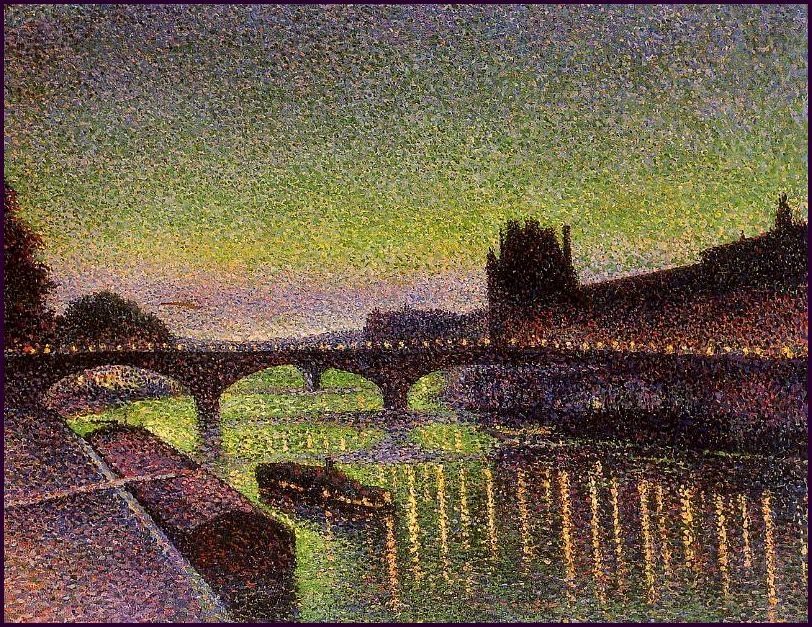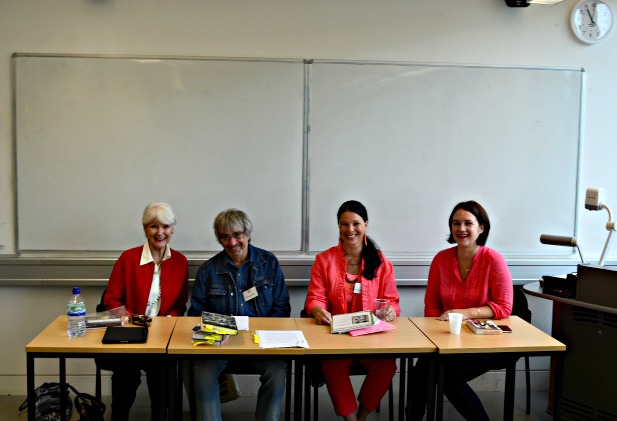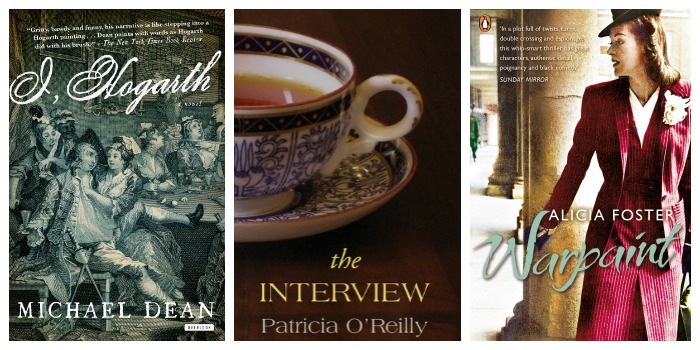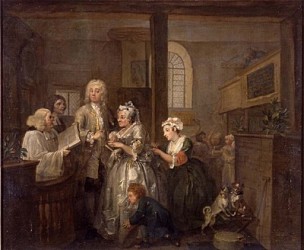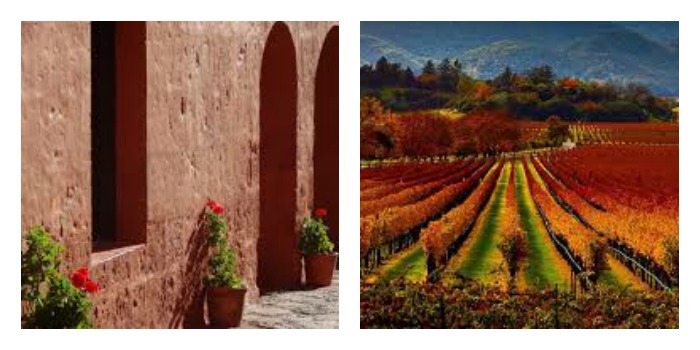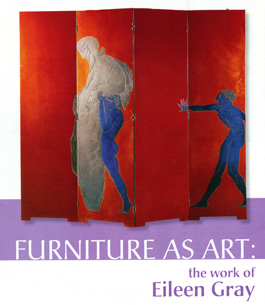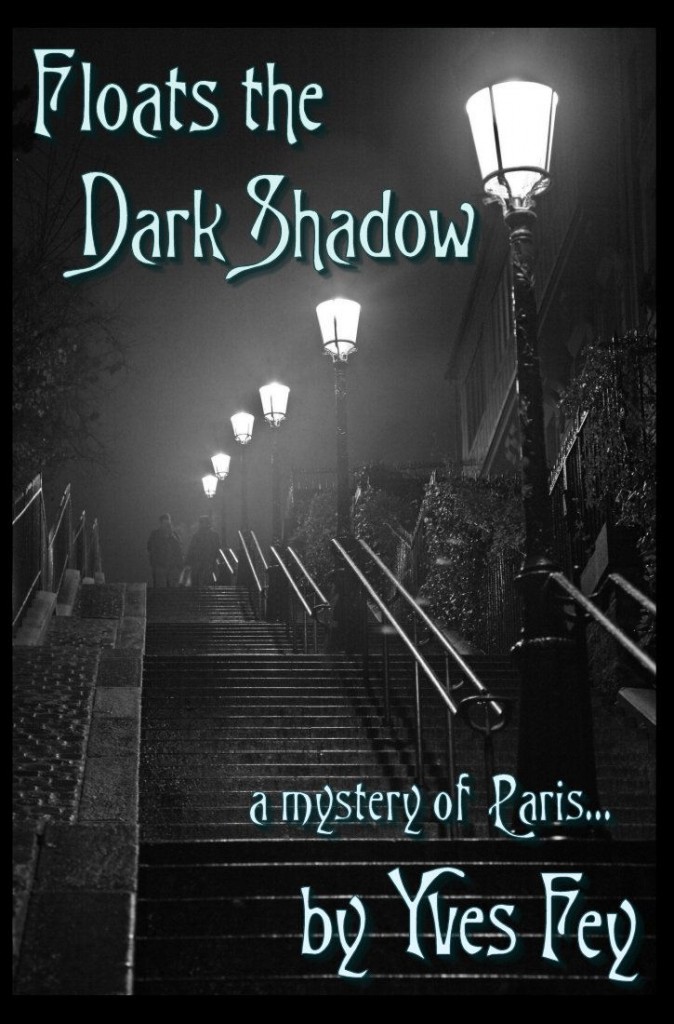 With Halloween looming Floats the Dark Shadow by Yves Fey is the perfect art-related historical mystery for this month’s feature! This novel is historically fascinating with macabre moments set during the Belle Époque era in Paris. Children are disappearing in the “City of Lights”, as American born painter Theodora Faraday struggles with her painting and illustrating poems for the Revenants, a group of poets inclusive of her cousin, Averill, with whom she’s romantically infatuated. When Inspecteur Michel Devaux suspects the poets are somehow tied to the disappearance of the innocent youths, Theo’s world goes starless. Fey takes us into the underbelly and mysterious of Paris: poetry readings in the catacombs, Tarot card fortunetellers, the asylum, a black Mass, and could it possibly be true that France’s most evil historic serial killer Gilles de Rais from the fifteenth century has somehow reincarnated?
With Halloween looming Floats the Dark Shadow by Yves Fey is the perfect art-related historical mystery for this month’s feature! This novel is historically fascinating with macabre moments set during the Belle Époque era in Paris. Children are disappearing in the “City of Lights”, as American born painter Theodora Faraday struggles with her painting and illustrating poems for the Revenants, a group of poets inclusive of her cousin, Averill, with whom she’s romantically infatuated. When Inspecteur Michel Devaux suspects the poets are somehow tied to the disappearance of the innocent youths, Theo’s world goes starless. Fey takes us into the underbelly and mysterious of Paris: poetry readings in the catacombs, Tarot card fortunetellers, the asylum, a black Mass, and could it possibly be true that France’s most evil historic serial killer Gilles de Rais from the fifteenth century has somehow reincarnated?
Paris is exquisite, beautiful, but not all its inhabitants embody and live for virtuous elegance, others celebrate wickedness, live for sot obsessions, and morbid delusions…
Stephanie Renee dos Santos: Please tell us about the dark and disturbing haunts and happenings in Paris during the Belle Époque era (1871-1914) that many people may not be aware of. How much of its depiction in Floats the Dark Shadow is from your imagination versus fact?
Yves Fey: I don’t think I invented anything, unless it was specific to my fictional characters, like Carmine’s Tarot readings. The tale of Leo Taxil’s hoax is true, including the riot it caused when his duplicity was revealed. But I’m not sure he counts since all his tales of lesbian demonesses and portals to hell were fraudulent.
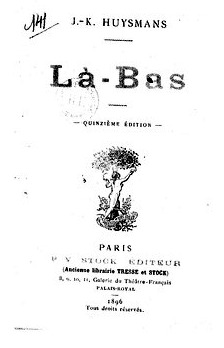 All the gruesome stories about Gilles de Rais are taken from historical research about him, and from author J. K. Huysmans’ novel, La Bas, which is referenced in my mystery. I should note that recently Gilles has been presented as the victim of a political conspiracy to seize his lands. I chose the most dramatic interpretation of his history, his devotion to Jeanne d’Arc and subsequent fall from grace, as my own.
All the gruesome stories about Gilles de Rais are taken from historical research about him, and from author J. K. Huysmans’ novel, La Bas, which is referenced in my mystery. I should note that recently Gilles has been presented as the victim of a political conspiracy to seize his lands. I chose the most dramatic interpretation of his history, his devotion to Jeanne d’Arc and subsequent fall from grace, as my own.
I wished I could have used even more about the strange occult underground that was practicing magic in Paris at the time. The story of the dueling magicians is true (well, how true is debatable, of course), but all the details were reported at the time, including the ensorcelled horses stopping dead in their tracks on the way to the duel. Huysmans believed he was being psychically attacked (along with his cat) by malevolent spirits because he’d mistakenly befriended the notorious Abbe Boullan, a truly mind-boggling debauchee. Huysmans was forewarned about the falling mirror that would have killed him.
I do plan to do more with the members of the Golden Dawn. I don’t know if Irish poet Yeats will be back, but the basic details of the psychic communion scene is based on his writings. He believed in and practiced magic, though most of his biographers just flee in embarrassment from that knowledge. MacGregor and Mina Mathers will return in later books in the series. They began holding strange “Egyptian” rites in Paris. And they are about to get involved in a huge scandal with the infamous Aleister Crowley [next novel], who called himself the Great Beast 666 and was dubbed the “Wickedest Man in the World”.
SRDS: What compelled you to include art and artist in your historical mystery?
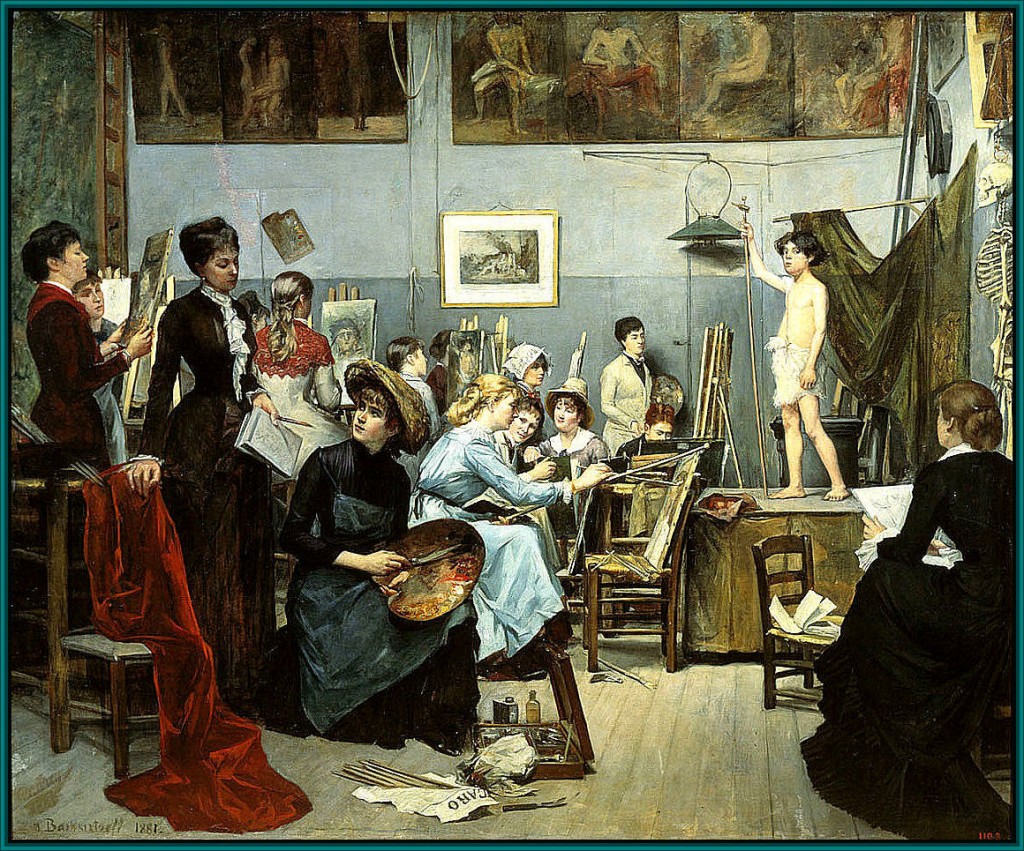
In the Studio by Marie Bashkirtsheff. Set over a decade earlier than my mystery, this painting shows a class for women at the famous Academie Julien, where my heroine Theo later studied. Many foreign students, women, and French students improved their skills studied here. Women were charged double.
YF: I always wanted to write about Paris in this general time frame, and felt that an artist protagonist could bring a special perspective to the time. In the past, I had considered writing something more Colette inspired, or theatre inspired, a la Children of Paradise, but when I began I was trying to write a novel with an artist heroine. My first concept had that heroine accused of murder. She was supposed to be an aspiring artist, but she kept telling me she was a journalist. We were deadlocked and I had to scrap that book and try to begin again. There was nothing wrong with it in theory, but it refused to come alive. It was when I conceived of the copycat Gilles de Rais as the villain that Floats the Dark Shadow was born. Theo and Michel, my detectives, became the new protagonists. My Gilles (like the original) is very theatrical, and thinks of his crimes, of evil, as an art. And because J.K. Huysmans had just written his novel about Gilles de Rais, I wanted to pull in the literary aspect as well, and so the Revenants, my decadent poets, came into being.
SRDS: What drew you to your specific visual art medium, artwork, and/or artist character?
YF: As an artist myself, and one who loves the art of that period, I felt I could write Theo believably. My main artist medium is paint, so I wanted a painter rather than a sculptor. Theo and I do share certain perceptions, but she’s not me. She’s far more brave and forthright! And her art is bolder.
SRDS: What unique historical objects and/or documents inspired the story?
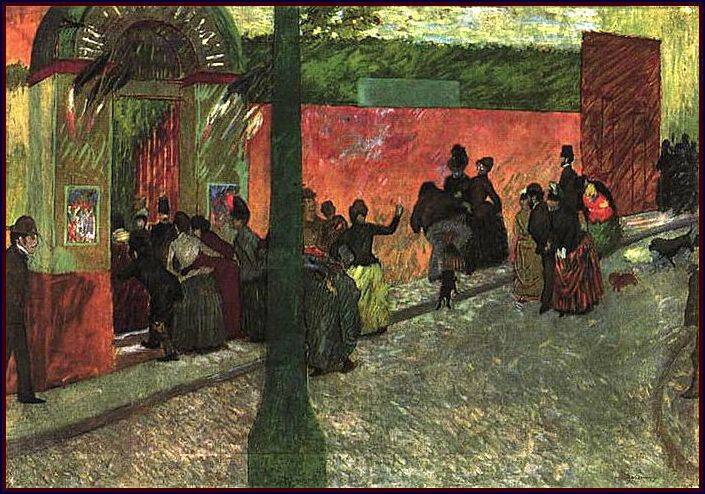
Le Moulin de La Galette by Frederico Zandomeneghi. The crowd gathers at Montmartre’s favorite dance hall.
YF: The Impressionist paintings of Paris in general and of Montmartre in particular inspired many of the settings for the book—the Moulin de la Galette and the Moulin Rouge, though I never managed to get my characters inside it. My group of poets, the Revenants, are influenced by the mystical and often sinister art of the Symbolist painters, as well as the poetry of the time. I also tried to capture the visual and spiritual decadence of Là-bas, J.K. Huysmans’ novel about Gilles de Rais. For frosting on this rich layer cake, Art Nouveau was just now sweeping into Paris, we look at it and are filled with nostalgia, but then it was cutting edge.
SRDS: Is there an art history message you’ve tried to highlight within the novel?
YF: Not a message, but the atmosphere of creative vitality, the energy and inspiration that made Paris the center of the art world from the birth of Impressionism to World War II. There’s the gaiety and sunlit idylls of the Belle Époque on the one hand, but even fin-de-siècle ennui blazes on the canvases of the Impressionists, Post-Impressionists, Expressionists, and Fauves.
SRDS: What do you think readers can gain by reading stories with art tie-ins?
YF: New ways of looking at the world – literally changing color, shape, emphasis of their perceptions. Also revisiting, recapturing lost vision as well as finding new awareness. And all facets of art and culture interweave with the politics of the era to give a more complete picture of the time.
I read about people and periods that I love, but also sometimes about things I don’t have much feeling for, like opera, but can become fascinated by and understand better just because of the information and understanding a well-written book can bring.
SRDS: What fascinating information did you uncover while researching but were unable to incorporate into the book but can share here?
YF: I think I had at least pieces of everything, though I had to go through and cut many details to keep a decent pace. One great setting that went entirely was a scene at Deyrolle’s, the famed taxidermy shop in Paris, which had a wonderful visual weirdness with all the various stuffed creatures surrounding the characters, who’d come to pick up grandmama’s stuffed poodle. I’d planned a Toulouse-Lautrec style scene at the Moulin Rouge which never materialized, but I do have a scene at Oscar Wilde’s favorite café and at the Grand Guignol. Theo dances with Averill at the Moulin de la Galette.
There were many deliciously weird members of the occult movement in Paris before, during and after the time in which my mystery is set. I could only do a few bits and pieces of their histories – Abbe Boullan was particularly notorious. In some cases there was no room for the tales. In other cases, the secret societies were all too successfully secret and I could not find all that I hoped I would. I will keep the occult thread alive in the book, especially for the members of the Golden Dawn, which is heading for a huge scandal.
There was far more research on Gilles de Rais than I could possibly include. For instance, after the death of Joan of Arc, there were several impostors roaming France. Claude des Armoises was one of these faux Joans, one in whom Gilles de Rais professed belief, because her resemblances to Joan was supposed to be striking.
And there is La Goulue, the dancer Toulouse-Lautrec made famous in his paintings. Later in her life, she became a rather tawdry lion tamer. I’d have loved to create some sort of scene from that fragment of her biography.
SRDS: Are you working on a new historical novel with an art tie-in? If so, will you share a little with us about your next release?
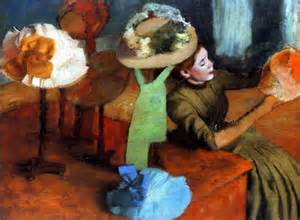
The Hat Shop by Edgar Degas. Of all the paintings of the era that I looked at, this seemed most like a painting Theo might have done, with the shop girl subject, the bold colors and asymmetrical composition.
FY: I’m at work on the sequel to Floats the Dark Shadow. It will have less focus on art and poetry, but will detail some of Theo’s struggle to discover herself as an artist. Her work is always of primary importance to Theo, but she keeps being distracted by these pesky murders – and the threat of falling in love. Theo does have her first group gallery show, along with her friend, Carmine. Their art is a success, but the evening is a catastrophe.
The backdrop for the second book is the Dreyfus Affair, so there’s more politics framing the murders, and a look at various forms of prejudice at work in Paris, not just against Jews, but gays, and women. But the French were far more liberal towards those of African descent than most other European countries, certainly more so than America. In the third mystery, I hope to look more closely at the women characters, several of whom are artists, and investigate their place in the Paris art world.
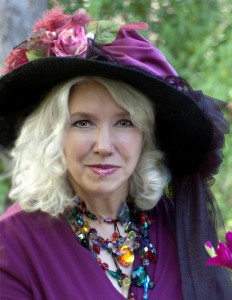 About the author: Yves Fey has an MFA in Creative Writing from the University of Oregon, and a BA in Pictorial Arts from UCLA. She has read, written, and created art from childhood. A chocolate connoisseur, she’s won prizes for her desserts. Her current fascination is creating perfumes. She’s traveled to many countries in Europe and lived for two years in Indonesia. She currently lives in the San Francisco area with her husband Richard and three cats, Marlowe the Investigator, and the Flying Bronte Sisters. Floats the Dark Shadow is Fey’s first historical mystery. It’s won several Indie awards–a Silver IPPY in the Best Mystery category, a Finalist Award in the ForeWord Book of the Year Awards in mystery, and it was one of four Finalists in both History and Mystery in the Next Generation Indie Awards. Previously, Fey has written four historical romances set in the Italian Renaissance, Medieval England, and Elizabethan England. She will soon be republishing these under her own name of Gayle Feyrer.
About the author: Yves Fey has an MFA in Creative Writing from the University of Oregon, and a BA in Pictorial Arts from UCLA. She has read, written, and created art from childhood. A chocolate connoisseur, she’s won prizes for her desserts. Her current fascination is creating perfumes. She’s traveled to many countries in Europe and lived for two years in Indonesia. She currently lives in the San Francisco area with her husband Richard and three cats, Marlowe the Investigator, and the Flying Bronte Sisters. Floats the Dark Shadow is Fey’s first historical mystery. It’s won several Indie awards–a Silver IPPY in the Best Mystery category, a Finalist Award in the ForeWord Book of the Year Awards in mystery, and it was one of four Finalists in both History and Mystery in the Next Generation Indie Awards. Previously, Fey has written four historical romances set in the Italian Renaissance, Medieval England, and Elizabethan England. She will soon be republishing these under her own name of Gayle Feyrer.
For more about the author’s novels visit:
Website: http://yvesfey.com/ Facebook https://www.facebook.com/YvesFey Twitter htts://twitter.com/YvesFey
Book trailer: https://www.youtube.com/watch?v=1UcFbx4gNdU
To Purchase Floats the Dark Shadow:
http://www.goodreads.com/book/show/13646255-floats-the-dark-shadow
Join us here Saturday November 29th for an interview with Mary F. Burns, author the historical mystery The Spoils of Avalon.
Interview posting schedule:
2014: August 30th Susan Vreeland, Lisette’s List (new release), September 27th Anne Girard, Madame Picasso (new release),October 25th Yves Fey, Floats the Dark Shadow, November 29th Mary F. Burns, The Spoils of Avalon (new release), December 27th Kelly Jones, The Woman Who Heard Color
2015: January 31st Heather Webb, Rodin’s Lover (new release), February 14th, Dear Mr. Washington, Lynn Cullen (historical/art children’s book new release), February 28th Alyson Richman, The Mask Carver’s Son, March 28th Maureen Gibbon, Paris Red (new release), April 25th Lisa Brukitt, The Memory of Scent, May 30th Lisa Barr, Fugitive Colors, June 27th Lynn Cullen, The Creation of Eve, July 25th Andromeda Romano-Lax, The Detour, August 29th Frederick Andresen,The Lady with an Ostrich Feather Fan

